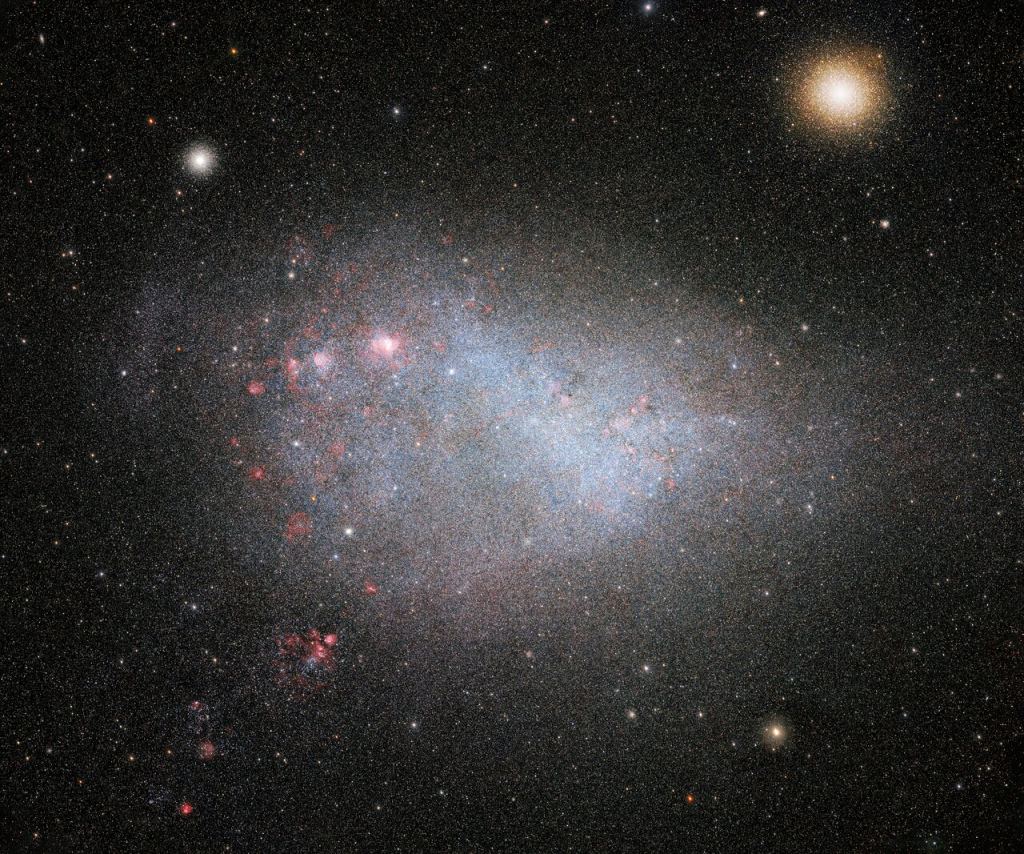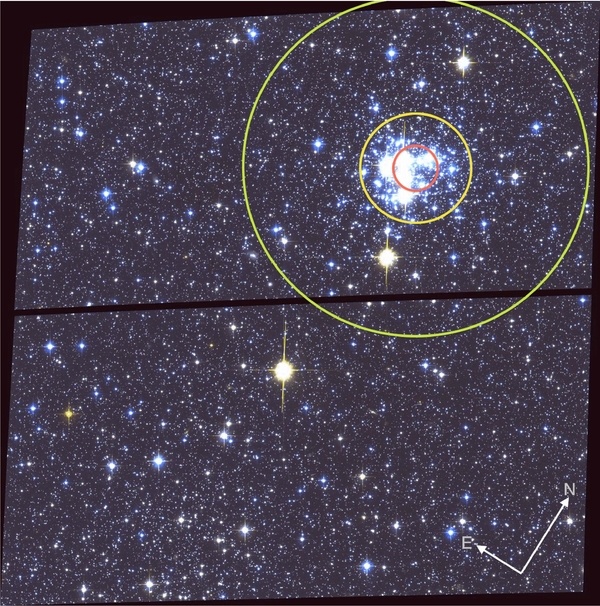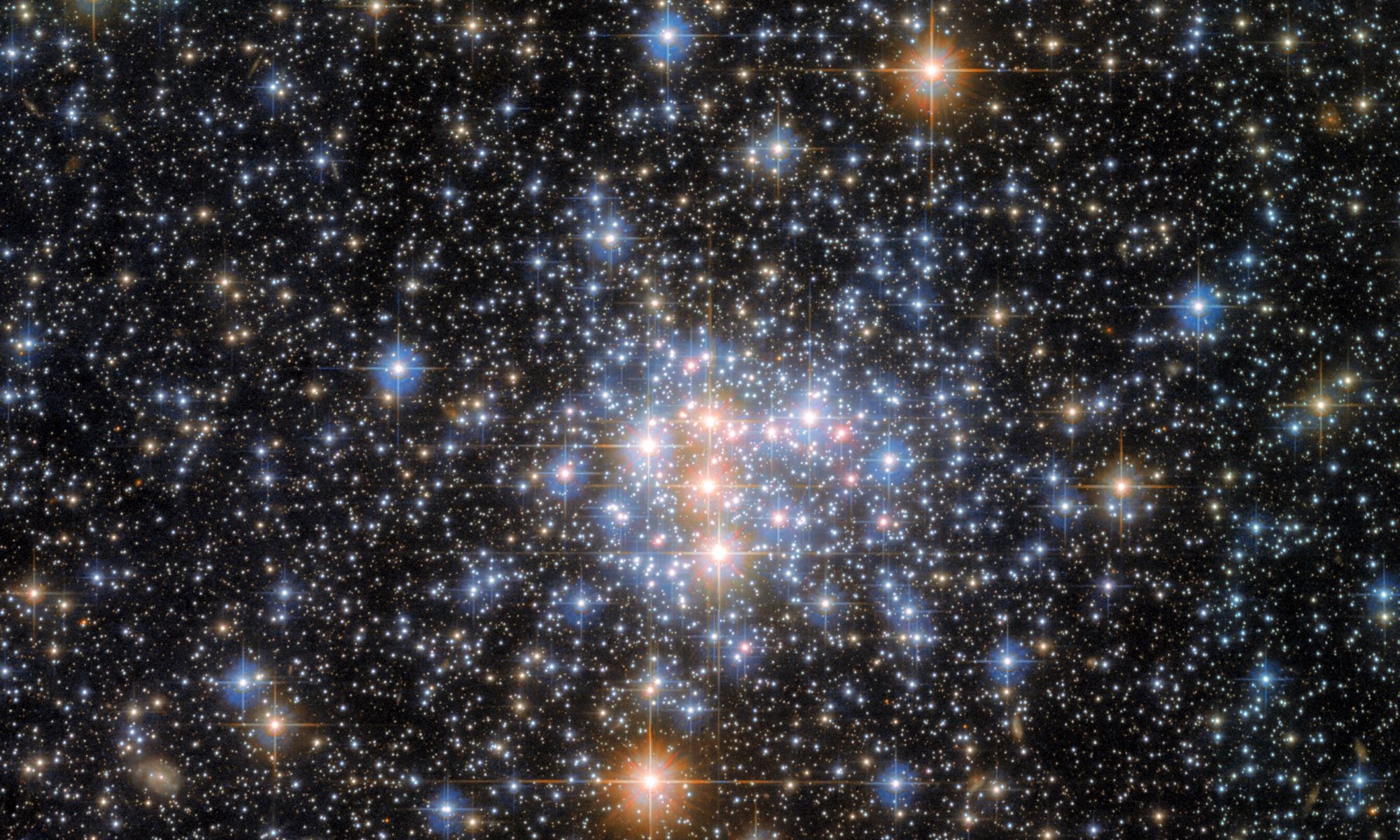As far as we know, nobody lives in our neighbour, the Small Magellanic Cloud (SMC.) So it’s okay to point our telescope there and gaze at it.
The SMC is a dwarf galaxy that’s only 200,000 light-years away. That makes it one of the Milky Way’s nearest galaxies. Since it’s so close, astronomers study it a great deal, and the Hubble has imaged it many times.
The SMC has a stellar population of hundreds of millions of stars, but this image shows a tiny fraction of them. It highlights a bright clump of stars that make up the open cluster NGC 376. The cluster is young, only about 28 million years old.
NGC 376 looks like a bright cluster of gems in this image. Open clusters are loosely-attached to one another gravitationally and are sparsely populated. They’re the opposite of the other type of cluster, the globular cluster.

Acknowledgment: Image processing: Travis Rector (University of Alaska Anchorage), Mahdi Zamani & Davide de Martin
But something’s happening to the cluster, and its loosely-bound quality is to blame.
NGC 376 is on its way to being a non-cluster. Astronomers say it’s dissolving into the Small Magellanic Cloud. It may have already lost 90% of its mass, according to a 2011 study. This can happen to open clusters following their rapid star formation phase. All that star formation can disperse the clusters’ gas. Rapid gas dispersal can form filamentary gas structures in some cases, and kinematic studies show that NGC 376 is forming a tail, though it’s not visible in this image.
Extremely young open star clusters (< 10 my> are prone to rapid dispersal by stellar winds. NGC 376 isn’t that young, but it may still be heading to a similar fate. Some astronomers call this “infant mortality,” though the stars in the cluster don’t die. But as the gas in the cluster becomes more diffuse, fewer stars can form.
The loss of gas also lowers the gravitational binding between the stars in the cluster. As a result, a large fraction of stars in NGC 376 have exceeded escape velocity and aren’t bound to the cluster any longer.

NGC 376 faces a rapid demise for an astronomical object. But it won’t be gone any time soon in human terms. Since the SMC is so close to us, objects like NGC 376 are easy to observe. Astronomers will learn much more about the fate of open clusters thanks to NGC 376’s proximity.

